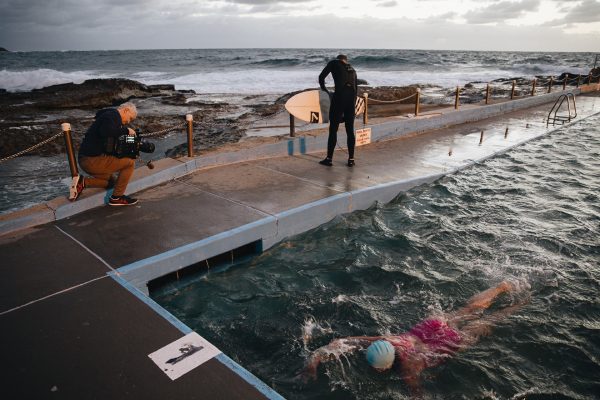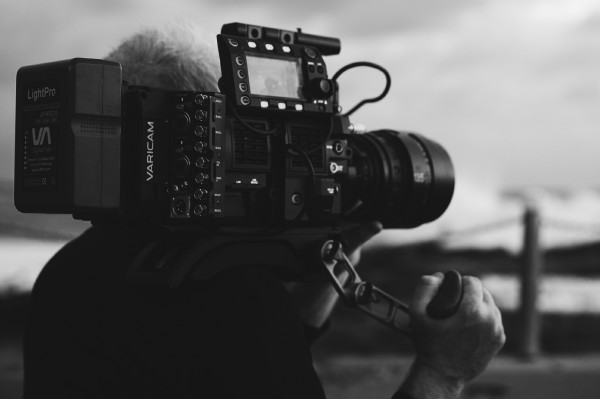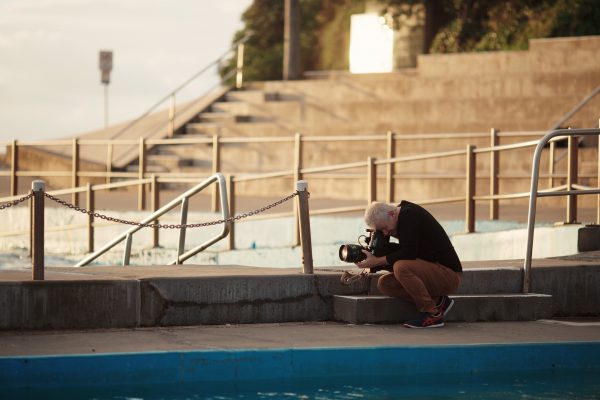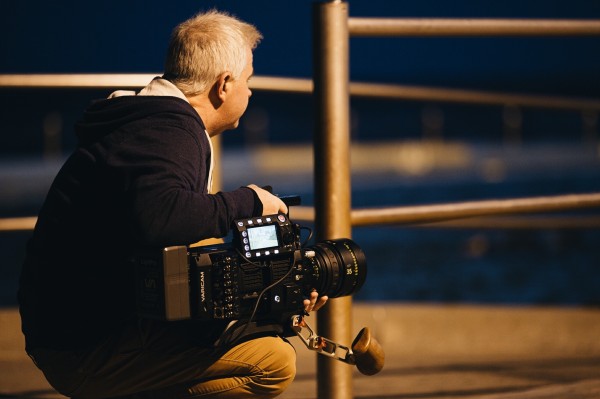Guest post by Jason Wingrove:
Dee Why Summer from Jason Wingrove on Vimeo.
Panasonic’s new Varicam 35 is a camera I knew I would never own. The specification and price point have never appealed and I admit to having a few pre-conceived ideas about the camera. So when Sean Dooley of VA Digital Hire in Sydney asked if I’d like to play with it I was reluctant to say yes. But then my curiosity got the better of me.

I often (OK always) take cameras down to Sydney’s famous Sea pools for the first quick and dirty test. Why? I find that working quick, in the near dark, run and gun style with little research or prep is a great test for any camera. I get to see how easily I can move around with the camera and how straightforward it is to change speeds, ISO and shutters on the fly. Being forced to shoot hand held gives me a great idea of the camera’s ergonomics and how easy it is to use in different shooting positions. Usually on a commercial shoot I have the luxury of a 1st AC to pull focus. Going handheld and focussing myself gives me a better insight into how good the EVF or monitor is, and how good any peaking or focus aids are. Finally the Sea pools are a visual challenge for any camera – the combination of people and water in harsh, unforgiving light is a great test. I get to examine sharpness, slow motion artefacts and dynamic range all in one location.
I agreed to meet Sean with the camera pre-dawn at one of the ocean baths. It was only 30 mins before first light and to my surprise I was able to get the Varicam 35 out of its bag and set it up to my liking in about three minutes flat. 4K, 50fps, V-Log were rapidly set. Next cards were formatted, speed set and I got the camera comfortable on the shoulder. When I say ‘comfortable’ I mean balanced – the Varicam is no lightweight so this is essential. I was able to do this very quickly – by being late to the large sensor camera party I think Panasonic have benefitted from able to pay more attention to ergonomics. It feels like this camera is the love child of ARRI’s Amira/Alexa and Sony’s F55.
This attention to design also made the menus a breeze to use. I was able to move from page to page quickly even in the dark. This was thanks mainly to the camera’s detachable menu / remote screen which is a very good idea and had a great party piece I used later in the morning.
The first head scratcher for users who haven’t been closely following the Varicam 35’s development is the cameras base sensitivity – or I should say sensitivies. Don’t ask me how but the Varicam actually has two ‘native’ ISOs – 800 and 5000. The result is that the higher 5000 ISO is significantly less noisy 800 ISO with a lot of gain applied. Before dawn with the pool barely was just lit by sodium vapour lights so I started shooting with the ISO set at 5000. The results were very good – yes there was some noise but it was quite subtle mostly and somewhat grain like.

The Varicam 35 is heavy weighing at about 7.6kg with battery and baseplate. This compares to 6.5kg for a similarly kitted Amira and nearly 10kg for an Alexa setup. The Panasonic is wonderfully balanced and I had no problem fitting my beloved Vocas handgrip and extension arms to the Varicam’s shoulder pad/baseplate via its rosettes.
Earlier I mentioned the remote menu controller/ monitor screen. This comes as standard as part of the the Varicam 35 kit – it can be mounted on either side of the camera or detached and tethered on an extension cable if using the camera remotely. There is a shot in the test of a dog up on the poolside and his owner in the water. To get the shot I held the camera over the pool edge just at the waterline and used the screen in monitor mode to frame the shot. It is too small to really judge focus but kudos to Panasonic for adding this function. When this camera first hit the trade shows I initially thought the screen was a ridiculous idea, but having used it I’ve changed my mind. The ability to have the menu screen on the operator side for run and gun shoots, then swap it to the ‘dumb side’ for more AC centric shoots, and then detach it all together in monitor mode is actually well thought out.
The electronic viewfinder (EVF) is great. The image is nice and sharp with plenty of custom buttons on the side. Also the EVF has a handy optical zoom that lets you choose your preferred level of viewfinder magnification. There is plenty of info visible in the EVF – but it is placed above and below the image, not overlaid on it like the Sony F5/55 and FS7. The lack of distractions makes composition easier.
I shot all my slower frame rate footage in the AVC-Intra 4K-422 codec. Even thought the camera can shoot 4K at every frame rate (big tick there Panny) you have to change codec to AVC-Intra 4K-LT for anything above 60fps. This switching up from 50fps to 100fps is perhaps where some of the Japanese camera DNA comes in – the camera needed to be rebooted twice to engage this. Quite why it isn’t just a single reboot to swap modes is a mystery to me – next time Panasonic can we have just the one reboot please? The good thing is that I can’t see any obvious visual difference in the two codecs despite the different bit rates.
The imagery I got in all ISOs was very natural and filmic. The other test footage I’ve seen from around the world so far looks the same.
Niggles? Well there are a couple that I’m sure Panasonic are working on fixing. Firstly the operator side record start/stop button needs a very firm press – many times during the morning I pressed it and watched a gorgeous moment happen in the viewfinder only to realise the camera wasn’t rolling because I hadn’t pressed the button hard enough. This should be an easy, but essential, fix. The second niggle is that although the 50fps footage can be dragged and dropped into Premiere Pro CC14, the 100fps AVC-Intra 4K-LT codec cannot. I had to convert it to Prores via Davinci Resolve which can see it – albeit in an odd aspect ratio. I understand Panasonic and Blackmagic are working on this.
I’m glad I got out of bed early to play with the Varicam 35. Panasonic have got a lot right here and although I’ve not had firm numbers given to me I believe the camera should be available to rent or buy for less than a fully loaded Amira. The Amira & Alexa are the industry standard and seriously bulletproof choices, but I think the minor niggles and the post production path integration is worked out, the Varicam 35 is a camera anyone considering a high end purchase should take out for a spin.
Many thanks to Sean at vahire.com for the test camera. You can follow them on Facebook or Instagram.
Jason Wingrove is a Sydney based freelance Director & Cinematographer specialising in long form narrative TVC’s & high end corporate films. You can see more of his work on his website







